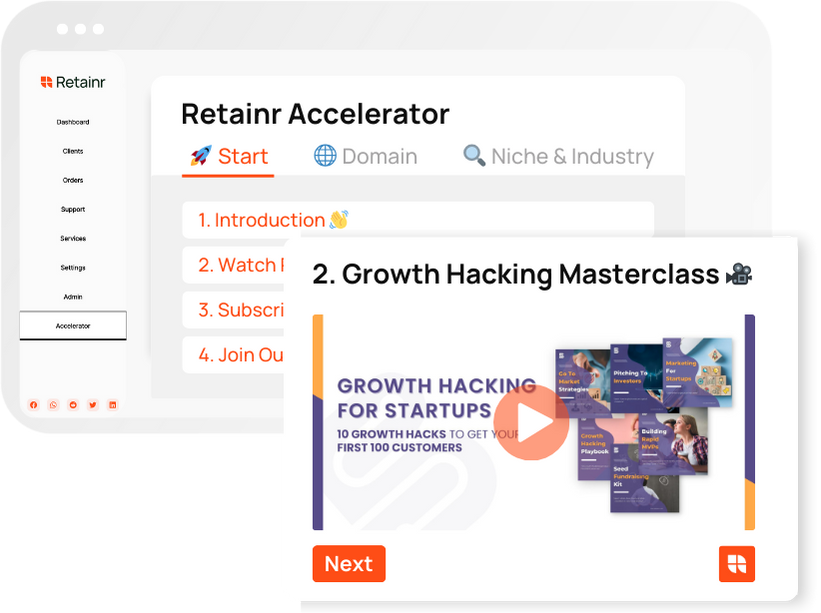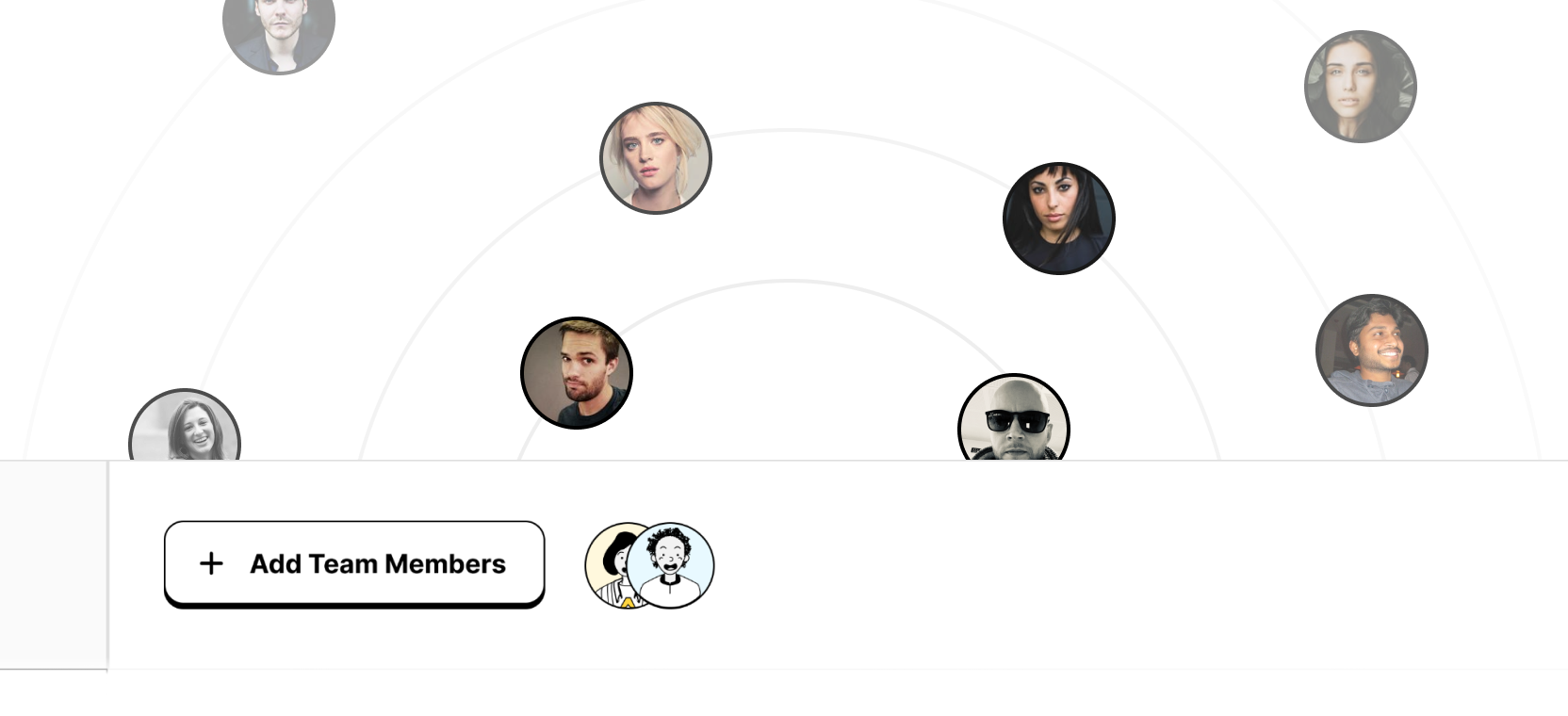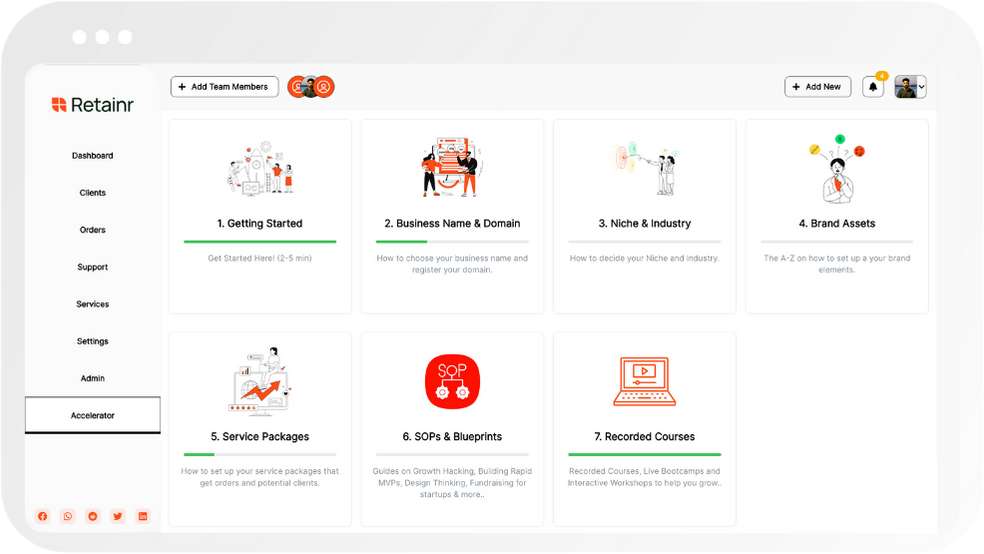
Top 4 Google Ads Features Every Marketer Should Know
Build with Retainr
Sell your products and services, manage clients, orders, payments, automate your client onboarding and management with your own branded web application.
Get Started1. What are the top 4 Google Ads features that every marketer should know about?
Top Google Ads Features Required by Marketers
Google Ads, formerly known as Google AdWords, is an essential tool for digital marketers wanting to reach wider audiences and increase website traffic. Here are a handful of features on Google Ads that every marketer needs to make the most of their advertising ventures.
- Keyword Planner: This tool is essential for those running Search Campaigns. It suggests keywords that users may use while searching for products or services similar to yours on Google. Also, it forecasts the performance of the listed keywords.
- Ad Preview and Diagnosis Tool: This feature helps to confirm that your ads are running without any issues. It also shows what a Google search result page looks like for a specific term, aiding you in understanding your ad's visibility.
- Audience Insights: Knowing your audience is key in marketing, and Audience Insights does just that. It provides information on who your converts are and enables you to learn about their interests, location, and more.
- Conversion Tracking: Tracks user activity after they interact with your ads. It lets you know if the user completed a desired action on your website, such as making a purchase or filling out a form.
Overview of Ads Features
The table below breaks down each feature, its functionality, and how marketers can use it to enhance their digital marketing strategy.
| Feature | Functionality | Use in Marketing |
|---|---|---|
| Keyword Planner | Suggests and forecasts performance of keywords | Identifies keywords for targeting in Search Campaigns |
| Ad Preview and Diagnosis Tool | Checks if ads are running without issues and shows ad visibility | Helps marketers make sure their ads are working properly |
| Audience Insights | Provides information on converts | Allows marketers to understand audience demographics and behaviour |
| Conversion Tracking | Tracks user activity post-ad interaction | Evaluates efficiency of ads by tracking desired actions completed |
2. How can I maximize return on investment using the top 4 features in Google Ads?
Maximizing ROI using Keyword Planner
Google Ads Keyword Planner is an excellent feature for any marketer aiming to increase their ROI. This tool helps you discover the many possible keyword variations for your ad. In turn, you get to bid for keywords with a high number of search volumes and low competition. Here's how:
- Tool set > Keyword Planner > Discover new keywords
- Input your product or service
- Analyse the comprehensive list of keywords and pick ones with low competition and high volume
Utilizing Ad Schedule for Maximum ROI
Ad Schedule is another smart feature in Google Ads. It allows advertisers to set specific hours or days of the week when ads are to be displayed. By analyzing the hour and day report under "Reports" > "Predefined Reports" > "Time" > "Hour and day," you can determine the peak times when your audience is online and schedule your ads to coincide with these periods. Below is the process:
- Choose your Campaign > Settings
- Scroll down to “Ad schedule” > +Ad Schedule
- Set preferred days and times
Maximizing ROI with Conversion Tracking
Conversion Tracking is critical for tracking ROI on Google Ads. It allows you to understand which keywords, ads, and campaigns are leading to valuable customer actions. For setting up, follow these steps:
- Tools & Settings > Measurement > Conversions
- +Conversion > Choose the Conversion action of relevance (website, app, phone calls, etc.)
- Fill the necessary details > Create and Continue
These functionalities help ensure you're not wasting money on ineffective keywords or inappropriate ad time slots, thereby maximizing your Google Ads ROI.
3. Can you explain how Google's keyword matching options work?
Understanding Google's Keyword Matching Options
Google Ads provides marketers with various keyword match options to help them optimize their ad campaigns effectively. These options include broad match, broad match modifier, phrase match, exact match, and negative match. Here's an explanation of how each matching option works:
- Broad Match: This is the default match type and thus, includes any searches related to your keyword, misspellings, synonyms, and other relevant variations. While broad match helps to reach the widest audience, it may not be as targeted as other options.
- Broad Match Modifier: This option allows you to indicate that certain words must be present in a user's search query for your ad to appear. You can do this by adding a '+' sign in front of the important words.
- Phrase Match: Your ad can appear when a user's search includes your exact keyword or close variants of it, in the exact order.
- Exact Match: This is the most precise option. Your ad shows on searches that match your keyword exactly or when the intent of the search is very close to your keyword.
- Negative Match: This option is used to exclude certain search terms from triggering your ad. This helps to eliminate irrelevant traffic and reduce wastage of your ad spend.
Benefits of Keyword Matching Options
Understanding how Google's keyword matching options work can provide numerous benefits to marketers. You can target your ads more precisely, eliminating unnecessary costs from irrelevant clicks and increasing your ROI. Furthermore, you can attract more qualified leads, increasing the chances of conversions. Here's a summary table of the benefits of each matching option:
| Matching Option | Benefits |
|---|---|
| Broad Match | Reaches a wide audience, Increases ad visibility |
| Broad Match Modifier | More control over keyword matching, Improved click-through rates |
| Phrase Match | Targets specific phrases, Reduces irrelevant clicks |
| Exact Match | Attracts qualified leads, Improves conversion rates |
| Negative Match | Eliminates irrelevant traffic, Increases ROI |
4. What benefits does the location targeting feature in Google Ads offer for marketers?
The Significance of Location Targeting in Google Ads
Location targeting in Google Ads is an essential feature that assists marketers in enhancing the effectiveness and efficiency of their ad campaigns. This feature allows advertisers to target their ads to specific geographical locations. Thus they can limit their ads to regions where they believe they will get the most value. This selective ad visibility comes with several benefits.
Benefits of Location Targeting
- Increased Relevance: By showing your ads to customers in a specific location, you significantly increase the relevance of your ads to your audience. This can lead to higher click-through rates and more conversions.
- Better ROI: By limiting your ads to areas where your products or services are most likely to sell, you reduce wastage of your advertising resources on unproductive regions. This ultimately leads to better ROI for your ad campaigns.
- Insights and Trends: Location targeting can give you some insightful data and trends about your audience. You can understand the behaviour and preferences of people from different geographical areas and use this information to optimize your overall marketing strategy.
Comparison of Google Ads Marketing without and with Location Targeting
Here's a comparison of expected outcomes when using Google Ads without and with location targeting:
| Without Location Targeting | With Location Targeting | |
|---|---|---|
| Relevance of Ads | May not resonate with entire audience | High relevance due to specific regional targeting |
| ROI | Potential wastage of resources on less productive areas | Better ROI due to strategic ad placement |
| Customer Insights | Might lack regional specifics | More detailed insights due to geographical segmentation |
5. What is dayparting in Google Ads and why is it important for marketers to understand?
Understanding Dayparting in Google Ads
Dayparting is a significant feature in Google Ads that allows marketers to run their advertisements at specific hours and days of a week. This can uniquely suit businesses that intend to target customers during their most active web hours. It is a tremendous practical bidding strategy that can help improve campaign performance by optimizing the highest performing hours of the day or week. Here are the key features of dayparting:
- Flexible Scheduling: Gives marketers the liberty to decide the days and hours their ads will show up.
- Bid Adjustment: Allows marketers to increase or decrease their bids for any given hour or day.
- Performance Analysis: Marketers can analyze ad performance during different time slots and modify their strategy accordingly.
The Importance of Dayparting for Marketers
Understanding dayparting is essential for marketers for many reasons. One of the most significant reasons is that it enables you to target prospects when they are most likely to respond to your ads. Below is a detailed explanation of why dayparting is crucial for marketers:
| Importance | Description |
|---|---|
| Cost Optimization | By running ads during the most profitable hours, you can optimize your ad spend and get the best return on investment (ROI). |
| Improved Conversion Rates | Ad displays during peak audience activity often result in higher click-through rates (CTR) and increased conversions. |
| Better Targeting | Allows marketers to target their audience based on their activity patterns, leading to better ad targeting and enhanced results. |
Implementing Dayparting in Google Ads
To implement dayparting, go to your Google Ads account and select the campaign you want to adjust. Under the “Settings” tab, click on “Ad Schedule”. Here, you can add the times and days you want your ads to run. To adjust bids for certain times, click on the "bid adj" column and set your preferred bid adjustments.
Remember, successfully implementing dayparting requires analyzing your ad data over some time to identify the periods when your audience is most active and when they are most likely to convert. This insight allows you to allocate your budget effectively and maximize your ad performance.
6. How can conversion tracking in Google Ads help in making more informed marketing decisions?
Understanding Conversion Tracking
Conversion tracking is a key Google Ads feature that every marketer should be familiar with. It is a powerful tool that allows marketers to track the actions performed by users after they click on your ad. These actions, referred to as conversions, can range from product purchases, sign-ups, form submissions to downloaded materials. Understanding how conversion tracking works can significantly improve your marketing strategies.
There are three notable benefits to utilizing conversion tracking:
- Performance Insight: Conversion tracking allows you to see which ads and keywords are driving the most conversions. And by knowing what works, you can invest more in those high-performing ads and keywords.
- Improved ROI: With the data provided by conversion tracking, you can better allocate your budget towards ads and keywords that drive conversions. This not only optimizes your budget spending but also improves Return On Investment (ROI).
- Effective Remarketing: Conversion tracking can provide valuable data about your website visitors. You can use this data to create specific remarketing lists and target ads to users who are most likely to convert.
Implementing Conversion Tracking
To set up conversion tracking, you need to create a conversion action in Google Ads. A small piece of code, known as a tag, must then be added to your site. After installation, every time a user completes a conversion action, the tag sends a signal to Google Ads, and that conversion is recorded.
| Step | Action |
|---|---|
| 1 | Go to the 'Tools & Settings' menu in Google Ads and click on 'Conversions' |
| 2 | Click '+Conversion' and select the type of conversion you want to track |
| 3 | Input the necessary details and set your desired conversion settings |
| 4 | Click 'Create and continue' to generate the conversion tracking tag and install it on your site |
After setting it up and collecting sufficient data, carefully analyze the insights to make more informed and strategic marketing decisions.
7. How can I use Google Ads to specifically target my intended audience?
1. Use of Keywords
Keywords play a crucial role in targeting your intended audience through Google ads. Long-tail keywords that are directly related to your offering or your brand can help to narrow down the targeting. Essentially, these are phrases that someone might search on Google if they were looking for your product or service.
- Narrow volume keywords, which have a smaller audience but are more accurate.
- Broad volume keywords, which have a larger audience but are less accurate.
It's important to find a balance between both types of keywords to ensure maximum reach and accuracy in targeting.
2. Use of Demographics
Google Ads also lets marketers target their ads based on specific demographics like location, age, gender, income level, and even personal interests. Google collects this information from users' search history and online behavior, enabling advertisers to reach their specific target market. Here is a basic table that provides further clarification:
| Demographic Factor | Description |
|---|---|
| Location | You can target your ads to users in certain cities, countries or regions. |
| Age and Gender | You can set your ads to appear only to users of a certain age or gender. |
| Income Level | You can target your ads to users within a particular income bracket. |
| Interests | You can choose to target users who have shown interest in similar products or services. |
3. Using Ad Scheduling
With Ad scheduling feature in Google Ads, advertisers get the ability to specify certain days or hours of the day when their ads should be displayed. This can be particularly useful if you know your audience is more likely to search for your products or services at certain times. For instance:
- If your target audience is working professionals, you might schedule your ads to appear during lunchtime or after office hours.
- For a restaurant, it can run ads before meal times to attract people who are deciding where to eat.
By using this feature appropriately, you can make your advertising campaigns more effective and efficient.
8. Are there any tips for effectively using location targeting in Google Ads?
Effective Tips for Using Location Targeting in Google Ads
Location targeting in Google Ads can greatly improve the efficiency of your campaigns. These are the top recommendations for using this feature effectively:
- Target Geographically Relevant Areas: It is essential to concentrate your ad spend on areas where your potential customers reside. This will help increase your conversions and reduce unnecessary spending.
- Modify Bids Based on Location: Google Ads allows you to adjust your bids based on location. If you know that a specific location brings in more traffic or conversions, you can increase your bid for that area. Similarly, decrease bids in less profitable locations.
- Exclusion of Irrelevant Areas: If there are locations that are irrelevant to your business or where your ad performance is unsatisfactory, exclude them from your targeted locations.
- Consider User’s Physical Location and Interest: Use the advanced location options to target users based on their physical location or the places they show interest in. For instance, a user might physically be in New York but showing interest in services available in California.
| Strategies | Benefits |
|---|---|
| Target Geographically Relevant Areas | Increases conversions and reduces unnecessary spending |
| Modify Bids Based on Location | Optimizes your budget usage by focusing on high-performing areas |
| Exclusion of Irrelevant Areas | Prevents wasted ad spend on unprofitable locations |
| Consider User’s Physical Location and Interest | Targets users with a higher potential to engage with your ad |
These strategies can help you effectively use location targeting in Google Ads. Understand your target audience and their geographic behaviors, and adjust your strategies accordingly to optimize your ad campaigns.
9. How can the dayparting feature in Google Ads improve my ad campaigns?
Understanding the Dayparting Feature in Google Ads
The dayparting feature, also known as ad scheduling, in Google Ads is a powerful tool that allows advertisers to optimize their campaigns by controlling when their ads should appear. Depending on your target audience’s online behaviour, you can set specific days and hours for your ads to run, potentially maximizing your conversions and ROI.
Benefits of Using Dayparting in Google Ads
- Strategic Planning: Dayparting helps in forecasting the impact of the marketing efforts based on the time zone, allowing you to plan your budget effectively.
- Improves Performance: It reduces wasted spend by only showing your advert when your audience is most likely to be online and convert.
- Flexible Bidding: You can adjust your bids for peak hours to get more visibility.
Sample Dayparting Schedule on Google Ads
| Day | Time | Bid Adjustment |
|---|---|---|
| Monday | 08:00 - 17:00 | +10% |
| Tuesday | 08:00 - 17:00 | +15% |
| Wednesday | 08:00 - 17:00 | +10% |
The table above is an example of a dayparting schedule. It shows bid adjustments made for specific days and times when conversion rates are expected to be high. With proper deployment of the dayparting feature, Google Ads can significantly enhance the efficiency and results of your marketing campaign.
10. What are the steps to set up conversion tracking in Google Ads?
Setting Up Conversion Tracking in Google Ads
Conversion tracking is an essential feature in Google Ads that allows marketers to measure the effectiveness of their ad campaigns by tracking the actions users take after viewing or clicking on an ad. Setting up conversion tracking involves several steps.
Here are the simplified step-by-step instructions:
- Create a Conversion Action: In your Google Ads account, click on 'Tools & Settings, then 'Conversions' and finally 'Plus' button to create a new conversion action.
- Configure Conversion Settings: Fill in settings including 'Category', 'Conversion name', 'Value', 'Count', 'Conversion window', 'View-through conversion window' and 'Attribution model' as per the specific requirements of your business.
- Set Up Conversion Tracking Tag: One of two tags must be installed - either a 'Global site tag' on every page of your website or an 'Event snippet tag' on a specific page where conversion happens like 'thank you' or 'purchase confirmation' page.
- Test Conversion Tracking: Once the tags are set up, you can verify the setup is correct by clicking on your ad and completing a conversion. Wait for approximately 24-48 hours, then check the 'Conversions' column in your Google Ads account.
Here is a simplified table explaining the configuration settings:
| Configuration Settings | Description |
|---|---|
| Category | Defines the type of conversion you want to track e.g., purchase, sign up, etc. |
| Conversion name | Identification name for the specific conversion action. |
| Value | Assigns a monetary value to the conversion if applicable. |
| Count | Determines whether to count every conversion or unique conversions. |
| Conversion window | Sets the time frame during which a conversion will be recorded after an ad click or interaction. |
| View-through conversion window | Specifies the time frame during which a conversion will be recorded after a viewable display or video ad impression. |
| Attribution model | Decides how credit for conversions is distributed among clicks on your ads. |
Conclusion
Revolutionize your Marketing Strategies with Google Ads
Google Ads offers marketers an arsenal of powerful tools to reach potential customers and drive business growth. Here are the top four features every marketer should be familiar with:
- Smart Campaigns: This feature uses machine learning to optimize ads, making it perfect for small to medium businesses without the time or resources to manage complex campaigns.
- Performance Planner: It provides future performance estimates and suggestions to improve your campaigns. The planner also indicates budget allocation for maximizing conversions.
- Audience Insights: It offers key information about who is engaging with your ads. This helps in refining targeting strategies and creating messages that resonate.
- Google Ads Editor: This desktop application allows comfortable offline editing and bulk changes. It's a natural time-saver for handling multiple campaigns and ad groups.
Empower your Business with Retainr.io
While Google Ads provides excellent tools for outreach, Retainr.io serves an equally important role in the process of client management. This whitelabel software allows you to sell, manage orders, and process payments under your own brand.
With Retainr.io, you can streamline client interaction, efficiently handle orders, and swiftly process payments. It essentially puts your business processes into your brand's mobile app, leading to improved customer relationship, order management, and payment streamlining.
Whether you're a start-up or an established business, Retainr.io is an essential tool in your marketing toolbox. It's time to augment the power of Google Ads with the client management features of Retainr.io.
Boost Your Agency Growth
with Retainr Accelerator
Uncover secrets, strategies, and exclusive blueprints to take your agency's growth to the next level — from marketing insights to effective presentations and leveraging technology.

SOPs, Cheatsheets & Blueprints
Leverage 50+ SOPs (valued over $10K) offering practical guides, scripts, tools, hacks, templates, and cheat sheets to fast-track your startup's growth.
Connect with fellow entrepreneurs, share experiences, and get expert insights within our exclusive Facebook community.
.jpg)

Join a thriving community of growth hackers. Network, collaborate, and learn from like-minded entrepreneurs on a lifelong journey to success.

Gain expertise with recorded Courses, Live Bootcamps and interactive Workshops on topics like growth hacking, copywriting, no-code funnel building, performance marketing and more, taught by seasoned coaches & industry experts.

.jpg)

.jpeg)


